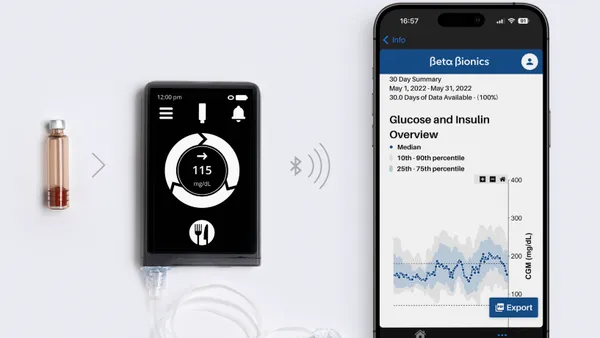Dive Brief:
- Cigna on Tuesday announced a significant expansion of virtual care benefits to millions of its customers receiving coverage through their employer, as payers increasingly turn to digital channels to cut costs without sacrificing access.
- The payer, which acquired telemedicine vendor MDLive earlier this year, is integrating MDLive physicians into digital-first primary, dermatology, behavioral and urgent care. Starting in January, Cigna customers insured through their job will have access to MDLive's network for virtual primary care providers for routine care, sick visits, prescription refills or any needed follow-up care after a wellness visit, the Connecticut-based payer said.
- Cigna is also launching virtual-first health plans to select employers in 2022. The plans, which will initially be available to large, self-insured employers, include a $0 co-pay for access to MDLive primary care providers, chronic condition management and care navigation.
Dive Insight:
Cigna acquired MDLive in April as insurers increasingly seek to bring more health services in-house to offer more coordinated, longitudinal care offerings to clients, instead of making them seek out third-party tools. At the time, the payer said key goals for the buy were earlier identification and diagnoses of care needs, faster referrals to providers, and more convenient access to appropriate care sites and medication fulfillment.
The greater integration of MDLive services and physicians in Cigna's benefits for 2022 is a step toward those goals. The expanded access to primary care services, for one, builds on the virtual wellness program Cigna and MDLive launched last year that found a significant gap in primary care access.
More than 75% of Cigna customers who had an MDLive virtual wellness screening in 2020 didn't have a primary care physician, while two-thirds identified a health condition as a result of the virtual screening, the payer said.
As part of the expanded benefits, MDLive providers will get access to customer's health information to track patient progress and make more informed recommendations, Cigna said. Patients can also be referred to other in-network specialists, and receive orders for lab work and biometrics at in-network facilities.
Cigna's new virtual-first health plans will launch next year for larger employers, but Cigna plans to expand to smaller sized and fully insured clients over time, subject to regulatory filings, the payer told Healthcare Dive.
Payers are increasingly looking to combine virtual and physical benefits in the same plan, seeking to offer patients additional access to primary care after more than a year and a half of the coronavirus. Proponents of such hybrid models tout how technology can be used to expand access to preventative care and screening, hopefully preventing downstream health complications.
Last week, diversified healthcare behemoth UnitedHealth said it plans to roll out a virtual-first primary care product by the end of this year, combining its Optum physician network with payer arm UnitedHealthcare's network offerings. Earlier this month, Teladoc made its virtual primary care pilot broadly available to commercial health plans, employers and other benefit sponsors nationwide.
Meanwhile, Amazon plans to expand its virtually enabled Amazon Care offering to a greater swath of the U.S. this year, including Dallas, Chicago, Philadelphia, Boston and Los Angeles.












